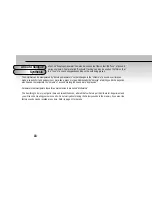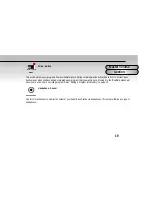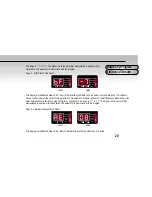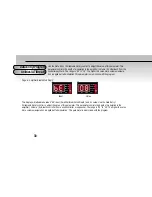
A = Attack time. This is used to adjust the time it takes when a key is pressed for the enve-
lope to go from zero to full value and can be used to create “Fade in’s”.
D = Decay time. This is used to adjust the time it takes for the envelope to go from full value
to the value set by the Sustain level.
S = Sustain level. This is used to set the level that the envelope remains at while the key is held down.
R = Release time. This is used to adjust the time it takes when key is released from the Sustain level to zero and can be
used to create “Fade out’s”.
An Analogue synthesiser can be broken down into three main elements.
1
The Oscillator generates “Waveforms” at a certain “Pitch”.
2
The type of “Waveform” selected and the settings of the “Filter” determines the sounds “Tone”
3
The sound is then passed through an “Amplifier” that is controlled by an “Envelope Generator”. These alter the
“Volume” of a sound over time.
All of these main elements can be further manipulated by various methods. For example:
The “Pitch” of a note can of course be played on a keyboard on a synthesiser but additionally it can be manipulated in real
time using the “Pitch Bend Wheel” to create “Slides” and “Bends” in pitch.
“LFO’s” ( Low Frequency Oscillators ) can be used to “Wobble” the pitch of a note at a specific rate creating a “Vibrato”
effect.
The “Filter” can be manipulated by “LFO’s” to vary the “Tone” of a sound at a specific rate creating a “Wah Wah” type of
15
About Analogue
Synthesis
















































